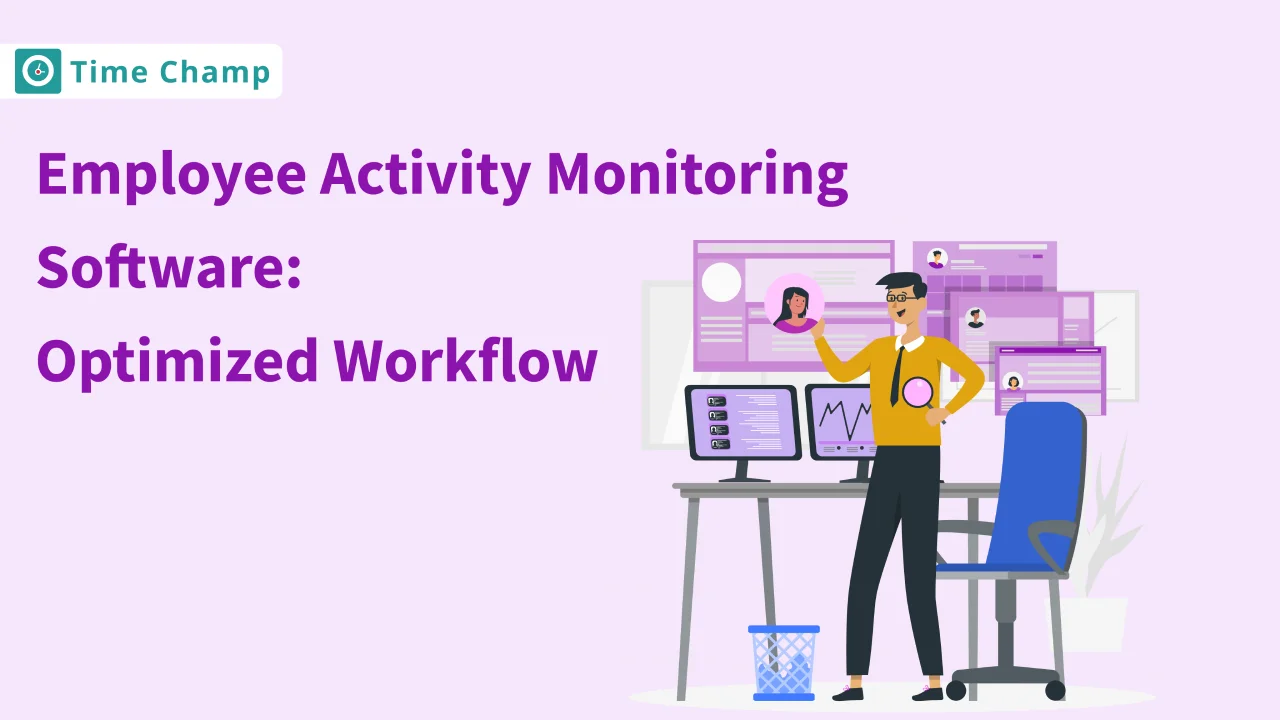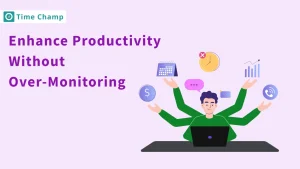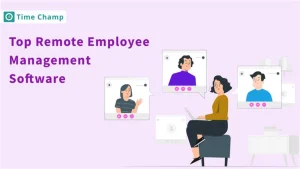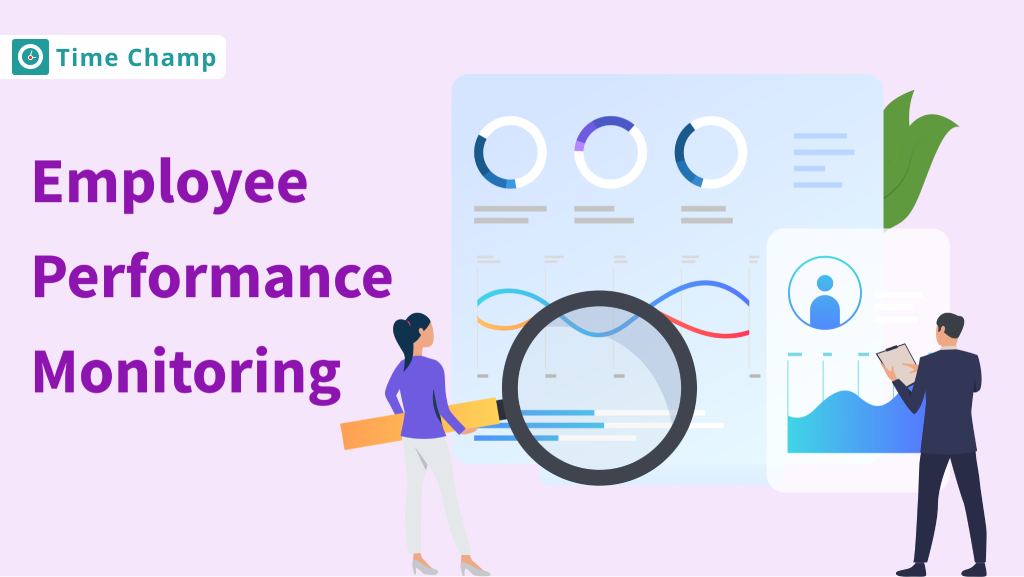In the modern world in the online world of the office, the position of technology in the effectiveness and efficiency of employees’ performance is rather crucial. In contemporary workplaces, Employee Activity Monitoring is crucial.
What is Employee Activity Monitoring Software?
Employee Activity Monitoring Software refers to the computer applications and tools that are loaded onto the systems by various firms to track the activities of the employees during their working period. This computer-monitoring program tracks the activity that the employees engage in different accounts such as their application usage, sites visited, and time allocation to given projects, among other forms of digital interaction. Employee Activity Tracking Software has two main objectives: To increase efficiency, establish corporate policy; protect the workplace; and find out how employees use handheld devices to consume corporate resources.
This form of monitoring also includes keystroke logging, screenshots, application usage logging, and analytics – methods that organizations can use to correct workflow problems and improve employee productivity. However, the former should be approached with care under the constraints of privacy and ethics to ensure a balanced union between supervision and freedom for the workers with the help of software.
The Employee Activity Monitoring software provides producers with information about the employee’s activity. It enables quantifying and regulating different instances of employee behavior such as time, software, and applications, to promote effectiveness, compliance with policy, and productivity.
Characteristics of Employee Activity Monitoring software
- Time Tracking: Many of the employee monitoring tools are essentially based on Time Tracking, in which employers want to know how much time employees spend on other jobs or projects. This function may shed light on the emerging problems and challenges that come with time management and performance efficacy and thus provide a guide in project management and efficiency enhancement.
- Screen Capture: The Screen Capture feature allows you to capture or record a section of a worker’s working screen. This screen-based activity process can play an important role in any auditing process to test the suitable direction of activities or to point out areas of coaching and feedback.
- Email and Communication Monitoring: This should also include email and other forms of communication like IM chats, etc. It is part of the leak prevention and controlled surveillance communication policy.
- Application and Website Usage Monitoring: As a result, with the identification of used applications and web pages, it is possible to usher the employees into more relevant practices and to exclude them from hazardous and time-wasting sites while keeping a reasonable balance using company resources.
- Idle Time Tracking: The number of hours the employees are sleeping also helps to understand the association issues or problems in the workflow that inhibit the level of productivity.
- Keystroke Logging: An employer would be able to measure an employee’s level of activity through keystrokes if it were possible. It means that some security failures can be prevented altogether.
- Location Tracking (for remote work): The target of location tracking is the outlying or field employee since a worker will always be at their designated post and dispatch the necessary safety measures with immediate effect.
- File and Document Tracking: Monitoring file access and document content is one of the most important aspects of data safety, protection of intellectual property, and timely work.
- Compliance and Reporting: Automated compliance tracking and reporting render achievable the standards below and streamline report generation for audits and performance reviews.
- User Behavior Analytics: For example, in studying the behavior patterns of employees, companies identify pattern variations that can be associated with shortcomings or potential risks.
Key Elements to Consider in the Best Employee Monitoring Solutions
Selecting the best Employee Monitoring Software requires consideration of several factors:
- User-Friendly Interface: Ease of use is paramount. This includes an intuitive user interface that will help supervisors and management to navigate through the software with a minimum learning curve.
- Compliance with Privacy Laws: The software should comply with privacy laws, which encompass both employee and company privacy.
- Real-Time Monitoring and Alerts: Response and decision-making time are improved, as the quick insights and notification function enables addressing the issues in a real-time manner.
- Scalability: In large organizations, the software must be scalable to accommodate more users and higher levels of sophistication that do not compromise quality.
- Support and Training: A firm foundation and comprehensive training means guarantee the software can be efficiently rolled out across the business.
- Cost and Licensing: A clear cost approach and licensing allow the company to determine the appropriate software.
- Feedback Mechanism: A feedback mechanism that is incorporated in the monitoring software also plays a vital role in making continuous improvement and employee engagement part of the monitoring process, as their concerns are addressed.
Types of Employee Activity Tracking Software
The scope of applications of the Employee Activity Monitoring tool is wide; various forms of the software address particular requirements within the usage spectrum. Here’s a summary of the different types:
Building on the fundamentals of various types of Employee Activity Monitoring Software (EAMS), let’s enrich these categories with more in-depth understanding to aid in your selection process:
Time Tracking Software:
Managers can optimize team schedules and project timelines by using improved time-tracking tools that can deliver analytics on time allocation efficiencies. These solutions may even be automated time entry suggestions from AI analysis of work activities.
Computer Usage Monitoring Software:
These highly evolved methods like Computer usage monitoring show specific categorizations, mark non-productive activities, and reveal how software and internet use are related to occupational roles. It may assist in determining which activities are required and which are not, which may result in better IT resource management.
Employee Desktop Monitoring Software:
Premium software offered may also have unique features like anomaly detection feature, which allows for detecting irregular activity patterns, therefore allowing management to become aware of potential distractions or intrusion attempts.
Communication Monitoring Software:
In addition to monitoring email and messaging systems, advanced systems may integrate sentiment analysis to gauge employee engagement and morale. and these observations can guide human resources in anticipating and preventing workplace issues.
Keystroke Logging Software:
The highest-quality keystroke logging is more sophisticated pattern recognition that might provide visualization of workflow processes or compliance concerns, with encryption that would hide any sensitive input from unauthorized extraction.
Remote Employee Monitoring Software:
To acknowledge working hours in different time zones and accommodate diverse legal standards across regions, best-in-class software developed to meet the needs of remote teams will offer customizable privacy settings.
Productivity Monitoring Software:
Integrations with third-party tools and proprietary systems are incorporated into premium productivity software to consolidate work activity into one platform and provide a single view of productivity.
Attendance Tracking Software:
The integration with payroll systems, automated leave management, and a mobile interface for clocking in/out can make administrative HR work much easier to achieve better results.
Behavior Analytics Software:
By generating baseline profiles for normal behavior, these instruments can identify exceptions that indicate a security threat, an overfatigued employee, or another point for HR intervention.
Security Monitoring Software:
Advanced security-centric monitoring technologies employ the use of predictive analytics to proactively discover security vulnerabilities and connect to incidence response systems that reduce response procedures.
Task and Project Management Software:
The best-integrated systems combine the tracking of projects with complex reporting and collaboration tools, allowing teams to remain connected to the project goals while allowing the teams to track their workflow inside the same environment.
Employee Wellness Software:
Top wellness software programs provide employees with individualized insights, mental health services availability, and analytics that allow managers to assess the current state of both organizational dynamics regarding work-life balance and other employees’ well-being in general terms.
With the correct employee active track monitoring, you can change how you operate your business, motivate your employees as well as protect valuable resources within the company from the inside and the outside world. It is a strategic move, which must be examined carefully so that it fits into your company’s long-term goals. Recall that the goals of Employee Activity Monitoring Software are to build an atmosphere of trust, productivity, and outstanding performance among your employees.
Is Employee Activity Monitoring Right for My Business?
Determining the suitability of Employee Monitoring (EAM) for your business requires a layered assessment of your operational context:
- Nature and Goals of Your Business: It is important to understand your needs in a certain industry. For instance, a tech company may require more advanced software to protect intellectual property, while a retail store may stress attendance and time tracking. Define objectives related to what you want to accomplish with EAM, such as security, efficiency, compliance, or a combination.
- How Your Team Operates: Your team’s structure plays an important role in determining the necessity of using monitoring software. An EAM that encompasses location tracking and time management can be beneficial for remote teams. For on-site teams, you can focus on monitoring tools that improve performance on tasks and allocation of resources.
- Level of Transparency: Employee acceptance and ultimately the effectiveness of EAM can be affected by how transparent you put the EAM into practice and make it known to your workforce. Consider a more open approach, which would involve employees understanding the goal and process of monitoring, which may contribute to keeping the culture of work positive.
- Commitment to Balancing Monitoring with Employee Privacy: You need to balance the fine line between data collection that provides you with meaningful information and respecting employees’ privacy. Consider EAM solutions that enable you to observe essential processes without violating personal space and labour laws. This balance is key in preventing moral and ethical controversy.
- Regulatory Compliance: What is the regulatory environment within your industry or jurisdiction? Align your EAM strategy with these regulations, but make sure you can adapt to changes in compliance legislation.
- Technological Compatibility: Check the compatibility of the possible EAM solutions with your current technology systems. Such systems, which would necessitate a complete reorganization of your existing environment, should be avoided unless the benefits are remarkably higher than the associated costs.
- Cost vs. Benefit Analysis: Calculate ROI based on a comprehensive cost-benefit analysis. Include not only the direct costs but also the possible returns in terms of increased productivity, efficiency, and security.
- Employee Feedback: Seek the opinion of your employees concerning the implementation of EAM. This might provide information on possible resistance, and points of improvement and to customize the system to employee-centric.
Finally determining if EAM is the right fit for your business will require objective thought concerning your operational needs, ethical practices, and corporate culture. Through careful analysis of these facets, one can select a tracking system that not only enhances operational effectiveness but also fosters a culture of trust, involvement, and collective prosperity.
What is the Role of Employee Activity Monitoring in Productivity, Performance, and Cost?
Employee Activity tracking serves as a fulcrum for enhancing productivity and performance while streamlining costs with features such as:
Purpose:
Employee Activity Monitoring Software’s general aim is to improve an organization’s workflow efficiency by leveraging data concerning work patterns, time management, and software utilization. It gives a clear image of how employees spend their working hours revealing the ways of performance improvement.
Productivity:
With these tools, Employee activity monitoring software allows managers to identify downtimes and inefficient practices and redesign the workflows for optimal efficiency. Data-driven insights provide the basis for unique performance strategies.
Performance:
Employee activities can be linked directly to the quality and output of their work under Employee Activity, as it can highlight high-performers and recognize employees who may need more support or training.
Cost Reduction:
Since Employee Activity Tracking Software generates its data, organizations can save time and resources, thus affecting the bottom line as it lowers the operational cost and boosts the return on investment.
The pros and cons of employing employee activity monitoring software
Pros:
- Enhanced Productivity: With employee activity monitoring software, managers can identify potential trouble spots and provide guidance or further training to employees. Furthermore, by measuring the time spent on certain activities, employers can detect and resolve bottlenecks, making it possible to adjust work patterns according to best industry practices.
- Improved Data Security: Insider threats and data breaches are prevented via alerts on unauthorized or suspicious actions by monitoring software. This is important to preserve client trust and avoid expensive data loss incidences.
- Real-Time Monitoring and Rapid Response to Issues: Real-time data makes fast decisions easy. An immediate response to an employee using unauthorized access to sensitive information helps prevent data loss. Likewise, problems such as poor performance or non-compliance can be addressed immediately.
- Evidence-Backed Performance Evaluations: Using objective data collected by employee activity tracking software, employers can perform evaluations that are more objective and precisely founded on verifiable evidence rather than mere opinion. This can lead to better career development discussions and acknowledgement of top-performing employees.
Cons:
- Potential to Undermine Employee Trust: When not communicated properly or implemented regarding employees as too intrusive, employee activity tracking software can damage trust between employers and employees. It can create a culture of mistrust, dampening the spirit and conceivably precipitating a brain drain.
- Privacy Concerns: Monitoring employee activities may breach employees’ rights to privacy especially if it meets personal data. Aligning with ethical standards and privacy regulations is important to preserve the dignity of both employees and the company.
- Legal and Ethical Considerations: If not used with care, the Employee Activity Monitoring Software can land companies in lawsuits, where it will appear that they are violating the privacy laws or the rights of the employees. In addition to this, dilemmas of ethics are created because of going too deep into employees’ work practices.
Employee Privacy: Balancing Monitoring with Rights
Although Employee Activity Monitoring Software tools can be an effective workforce management tool, the privacy issues that it raises need to be addressed with caution. Here’s a more detailed discussion on how to balance monitoring practices with employees’ privacy rights:
Transparency and Communication:
They need to be made not only aware of the monitoring but also to understand the reasons for it. If people are informed about what they are monitoring, as well as how the data is used and by whom, this can allay fears and create an environment of mutual respect.
Informed Consent:
Ideally, monitoring should never be a surprise. People must be included in the discussion before the implementation of Employee Activity Monitoring Software. Although not always necessary legally, their agreement can be a big favour towards the goodwill principle. It may entail amending employment contracts or policies to something with an explicitly mentioned recognition of the surveillance practices.
Balanced Monitoring Practices:
Employee Activity Monitoring Software should be set up to capture only such data that is required for the specified purposes i.e. to increase efficiency or ensure safety. Resist the urge to collect data because you ‘can’. Rather, address specifically related to metrics directly associated with job performance and operational efficiency.
Anonymization and Aggregation:
When applicable, try using aggregate data for high-level insights, rather than blindly focusing on individuals’ behaviour. Anonymization facilitates the emphasis that is placed on overall trends and patterns, which are more likely to have a greater impact on organizational development while privacy concerns are also mitigated.
Clear Data Retention Policies:
Have clear policies stating how the data collected will be stored, who will have access to it, and more importantly, for how long it will be stored. These policies must adhere to any relevant laws and incorporate best practices in data management including not keeping personal data for longer than required.
So, it is not a matter of mere legal compliance: it is a matter of cultivating a culture that prevents people from violating others’ rights. By considering the full range of implications and by keeping the process as transparent as possible, employers can develop an approach to monitoring that is consistent with all their interests and with the rights of the employees.
Conclusion
Employee Activity Monitoring Software (EAMS) is a comprehensive tool that aims at precisely tracking and improving the performance of employees. From project deadlines to the company data private protection, Employee Activity Tracking Software is an important part of any modern business organization. However, for the organizations intending to adopt such technology, the benefits need to be weighed against the attendant threats, particularly those regarding the protection of the employee’s privacy. However, the successful use of employee tracking software is on choosing suitable software for any enterprise, promoting transparency of information, and always sticking to the law.
The deployment of Employee Activity Monitoring Software should also be regulated by a strict adherence to transparency, respect for employee privacy, and strict legality. By ensuring that lines of communication remain open, and informed consent is routinely secured, businesses can use the Employee Monitoring Software tool to enhance efficiency without compromising trust which helps to raise the motivation level of personnel. Time Champ offers a robust and comprehensive software solution that encompasses an extensive spectrum of monitoring necessities with finesse and mindful observance of privacy regulations.
Time Champ, the advanced Employee Activity Monitoring Software elevates your company’s productivity. Book a demo today to discover our effortless combination of around-the-clock monitoring and strict compliance with privacy.
FAQ’s Employee
Activity
Monitoring
Employee Activity Monitoring Software is one of the software applications used by companies to and the work-related activities of their employee such as application usage, online activities, communication, and performance during work hours.
With the help of Employee Activity Monitoring Software (EAMS) such as Time Champ, you can keep track of employee behavior on a personal computer, which logs and reports usage data securely for review in an administrative portal.
Mostly used by employers, Employee Activity Monitoring Software systems track digital footprints such as screen captures email trails, application usage, and active working hours, to establish control and determine performance.
Yes, there are free versions or tiers of employee monitoring software available that offer basic surveillance features, though more comprehensive functionalities often come with paid subscriptions.
Screen monitoring contributes to team monitoring by providing a visual account of how employees spend their time, which can be vital for team management and identifying areas for productivity enhancement.







